| Weight | 1 lbs |
|---|---|
| Dimensions | 9 × 5 × 2 in |
| host | mouse |
| isotype | IgG1 |
| clonality | monoclonal |
| concentration | concentrate, predilute |
| applications | IHC |
| reactivity | human |
| available size | 0.1 mL, 0.5 mL, 1 mL concentrated, 7 mL prediluted |
mouse anti-Myogenin monoclonal antibody (ZM149) 6279
Price range: $160.00 through $528.00
Antibody summary
- Mouse monoclonal to Myogenin
- Suitable for: Immunohistochemistry (formalin-fixed, paraffin-embedded tissues)
- Reacts with: Human
- Isotype:IgG1
- Control: Rhabdomyosarcoma or Wilm’s tumor
- Visualization: Nuclear
- 0.1, 0.5, 1.0 mL concentrated, 7 mL prediluted
mouse anti-Myogenin monoclonal antibody ZM149 6279
| target relevance |
|---|
| Protein names Myogenin (Class C basic helix-loop-helix protein 3) (bHLHc3) (Myogenic factor 4) (Myf-4) |
| Gene names MYOG,MYOG BHLHC3 MYF4 |
| Mass 25037Da |
| Function FUNCTION: Acts as a transcriptional activator that promotes transcription of muscle-specific target genes and plays a role in muscle differentiation, cell cycle exit and muscle atrophy. Essential for the development of functional embryonic skeletal fiber muscle differentiation. However is dispensable for postnatal skeletal muscle growth; phosphorylation by CAMK2G inhibits its transcriptional activity in respons to muscle activity. Required for the recruitment of the FACT complex to muscle-specific promoter regions, thus promoting gene expression initiation. During terminal myoblast differentiation, plays a role as a strong activator of transcription at loci with an open chromatin structure previously initiated by MYOD1. Together with MYF5 and MYOD1, co-occupies muscle-specific gene promoter core regions during myogenesis. Also cooperates with myocyte-specific enhancer factor MEF2D and BRG1-dependent recruitment of SWI/SNF chromatin-remodeling enzymes to alter chromatin structure at myogenic late gene promoters. Facilitates cell cycle exit during terminal muscle differentiation through the up-regulation of miR-20a expression, which in turn represses genes involved in cell cycle progression. Binds to the E-box containing (E1) promoter region of the miR-20a gene. Also plays a role in preventing reversal of muscle cell differentiation. Contributes to the atrophy-related gene expression in adult denervated muscles. Induces fibroblasts to differentiate into myoblasts (By similarity). {ECO:0000250}. |
| Subellular location SUBCELLULAR LOCATION: Nucleus. Note=Recruited to late myogenic gene promoter regulatory sequences with SMARCA4/BRG1/BAF190A and SWI/SNF chromatin-remodeling enzymes to promote chromatin-remodeling and transcription initiation in developing embryos. {ECO:0000250}. |
| Structure SUBUNIT: Homodimer and heterodimer with E12; heterodimerization enhances MYOG DNA-binding and transcriptional activities. Interacts with SMARCA4/BRG1/BAF190A. Interacts (via C-terminal region) with SSRP1 and SUPT16H; the interaction is indicative of an interaction with the FACT complex (By similarity). Interacts with CSRP3. {ECO:0000250, ECO:0000269|PubMed:24860983}. |
| Post-translational modification PTM: Phosphorylated by CAMK2G on threonine and serine amino acids in a muscle activity-dependent manner. Phosphorylation of Thr-87 impairs both DNA-binding and trans-activation functions in contracting muscles (By similarity). {ECO:0000250}. |
| Target Relevance information above includes information from UniProt accession: P15173 |
| The UniProt Consortium |
Data
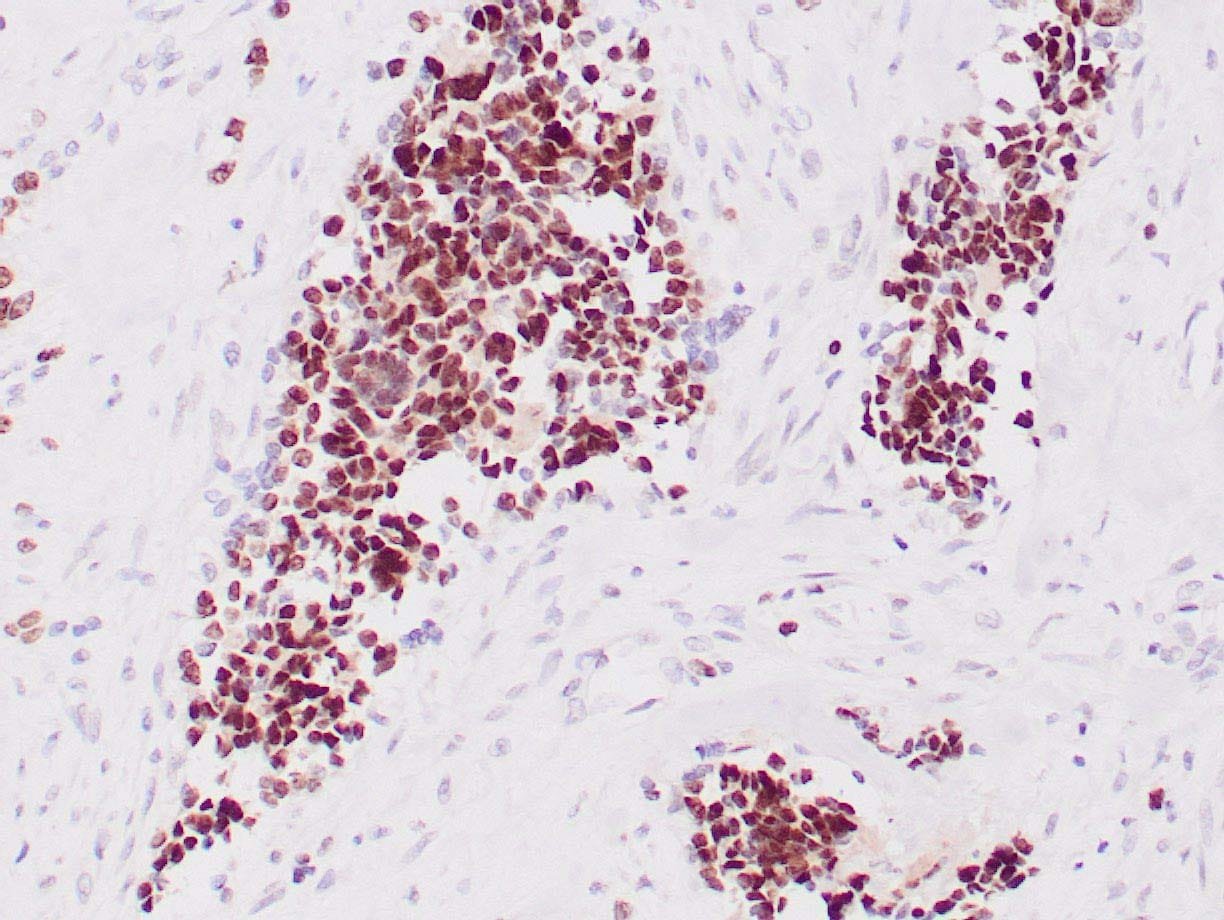 |
| Human rhabdomyosarcoma stained with anti-Myogenin antibody using peroxidase-conjugate and DAB chromogen. Note nuclear staining of tumor cells. |
Publications
| pmid | title | authors | citation |
|---|---|---|---|
| We haven't added any publications to our database yet. | |||
Protocols
| relevant to this product |
|---|
| IHC |
Documents
| # | SDS | Certificate | |
|---|---|---|---|
| Please enter your product and batch number here to retrieve product datasheet, SDS, and QC information. | |||
Only logged in customers who have purchased this product may leave a review.
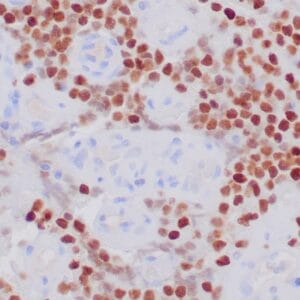
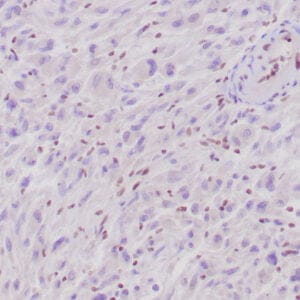
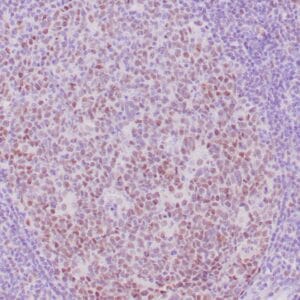
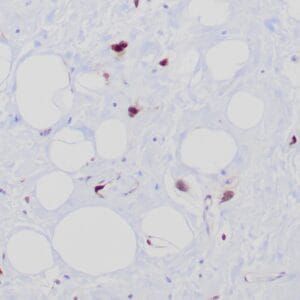

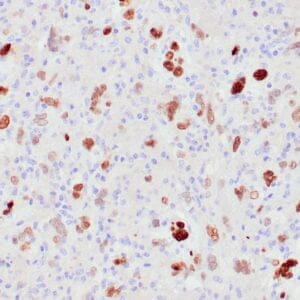
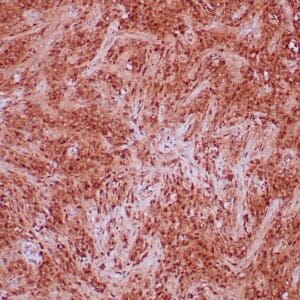
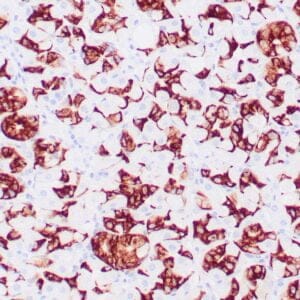
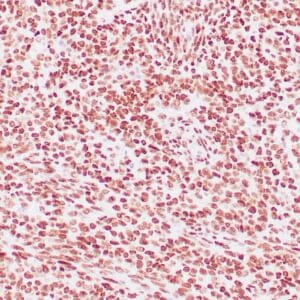
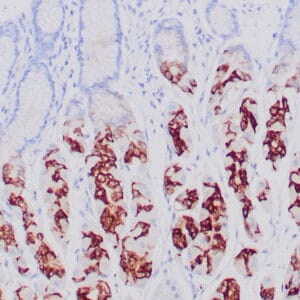
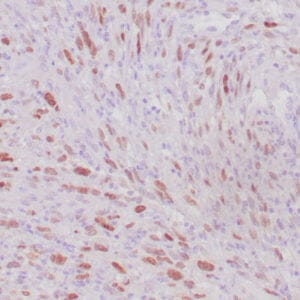
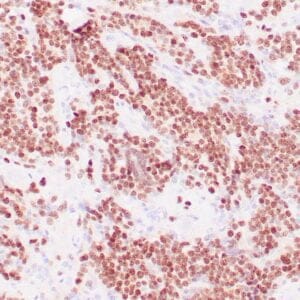

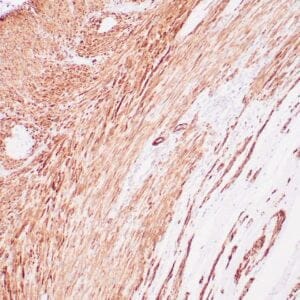
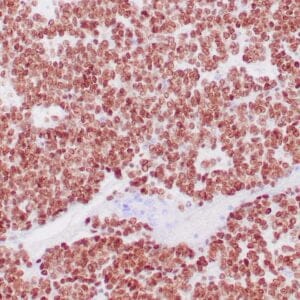
Reviews
There are no reviews yet.